AI Disclaimer: At Aircraft Accessories International, we’re always exploring new ways to deliver great content to the aviation community. We know aviation professionals and enthusiasts love reading and watching great content related to aircraft and flying, which is why we started creating newsletters, articles, and social media content back in 2022 to share our unique insights as an FAA certified repair station. We recently became intrigued with the use of AI as a research tool to find information published by other online sources, so moving forward we plan to use AI to find information on topics of interest and share it with the community. We will always clearly tag AI generated content and will never pass it off as our original work.
This article was generated using Microsoft Copilot. The exact prompt we used to generate this article is shared below and the sources the AI used to generate the article are listed at the end.
Buckle up and enjoy the read! AI may have written it, but it’s powered by our love of flight and aviation.
AI Prompt:
Find information about the basics of landing gear overhaul for general and business aviation aircraft like Beechcraft, Cessna, Challenger, Citation, Piper, and King Air, and create an article that summarizes key points. Include a list of the individual components and parts that make up a landing gear. Describe how each part of the landing gear typically wears. Describe repairs that are often needed on landing gear. Include the typical life span of landing gear and information about inspection requirements.
Landing gear systems are among the most critical components of an aircraft, responsible for safe takeoff, landing, and ground maneuvering. For aircraft like Beechcraft, Cessna, Challenger, Citation, Piper, and King Air, landing gear overhaul is a vital part of long-term maintenance planning.
Key Components of Landing Gear Systems
Landing gear systems typically consist of the following components:
- Shock Struts (Oleo Struts) – Absorb landing impact using hydraulic fluid and nitrogen.
- Wheels and Tires – Provide rolling capability and absorb runway contact.
- Brakes – Slow the aircraft during landing and taxiing.
- Hydraulic Actuators – Extend and retract the gear.
- Torque Links – Maintain alignment of the gear during movement.
- Bushings and Bearings – Reduce friction and wear between moving parts.
- Retract Rods and Uplocks – Secure gear in extended or retracted positions.
- Electrical Systems – Include sensors, switches, and indicators for gear status.
- Gear Doors and Linkages – Protect gear and assist in aerodynamic efficiency.
Typical Wear Patterns
Each component experiences wear differently due to stress, environmental exposure, and operational cycles:
- Shock struts: Prone to seal degradation and fluid leaks.
- Wheels and tires: Wear from friction and impact; tires often replaced on-condition.
- Brakes: Heat and friction cause pad wear and hydraulic leaks.
- Bushings and bearings: Wear from movement and lack of lubrication.
- Hydraulic actuators: Susceptible to internal corrosion and seal failure.
- Torque links: Can loosen or crack under stress.
- Gear doors and linkages: Vulnerable to misalignment and corrosion.
Common Repairs and Overhaul Procedures
Landing gear overhaul is a detailed process involving:
- Disassembly of the entire gear assembly.
- Non-destructive testing (NDT) for cracks and fatigue.
- Cleaning and refinishing of components.
- Replacement of worn parts, especially bushings, seals, and bearings.
- Replating of corroded surfaces (chrome or cadmium).
- Reassembly and testing to ensure compliance with OEM standards.
Repairs often include:
- Replacing worn tires and brake pads.
- Rebuilding or replacing actuators.
- Replacing bushings and bearings.
- Correcting corrosion damage.
- Adjusting or replacing retract rods and uplocks.
Inspection Requirements
Inspection intervals vary by aircraft type and usage:
- General aviation aircraft (e.g., Piper, Cessna): Often inspected on-condition or during annual inspections.
- Business jets (e.g., Citation, Challenger): Typically follow scheduled inspections every 5–10 years or based on flight cycles (FC).
- Routine checks include:
- Visual inspections for cracks, leaks, and corrosion.
- Functional tests of gear extension/retraction.
- Lubrication of moving parts.
- Checking uplock tension and retract rod play.
Landing Gear Lifespan
Landing gear components are generally hard-timed, meaning they have a defined service life:
- Typical overhaul interval: Every 10 years or 60,000–70,000 flight cycles, depending on OEM specifications.
- Component life limits: Range from 50,000 to 100,000 flight cycles.
- Overhaul duration: Can take up to 45 days, making exchange programs a popular option to reduce downtime.
Best Practices for Maintenance
To extend the life of landing gear and reduce overhaul costs:
- Lubricate regularly to prevent wear.
- Clean gear components to remove moisture and contaminants.
- Replace small parts proactively (e.g., bushings, seals).
- Use predictive maintenance tools to monitor wear trends.
- Align overhauls with major inspections to minimize aircraft downtime.
Conclusion
Landing gear overhaul is more than a compliance task—it’s a strategic investment in safety, reliability, and operational efficiency. Whether you’re managing a fleet of King Airs or flying a single Piper, understanding the wear patterns, inspection needs, and overhaul procedures ensures your aircraft remains safe and airworthy.
SOURCES:
https://www.jetls.com/post/understanding-landing-gear-overhaul
https://airqualityaviation.com/mro-services/landing-gear-repair/
abs-landing-gear-guide2.pdf
https://aaiair.com/blog-what-to-expect-when-you-send-your-aircraft-landing-gear-in-for-overhaul/
https://ww2.txtav.com/Parts/PartsRepair/LandingGear
https://www.gopaa.com/landing-gear/
https://www.cfinotebook.net/notebook/operation-of-aircraft-systems/aircraft-landing-gear
https://www.malibuaerospace.com/application/files/4415/1844/5477/11_Chapter_09.pdf
https://www.faa.gov/documentLibrary/media/Notice/N_8900.410.pdf
